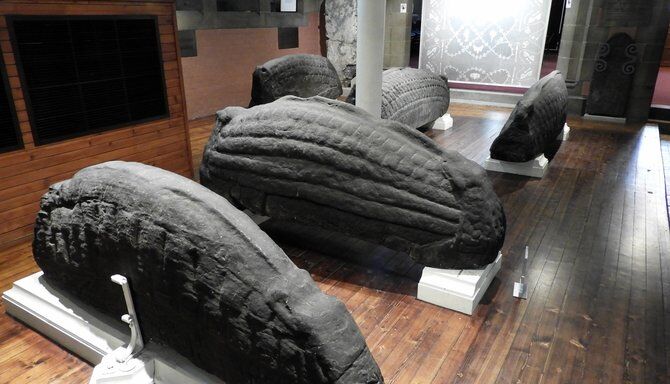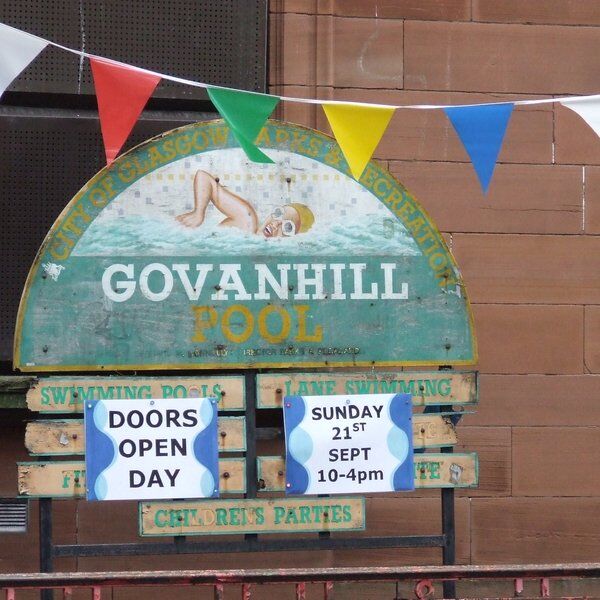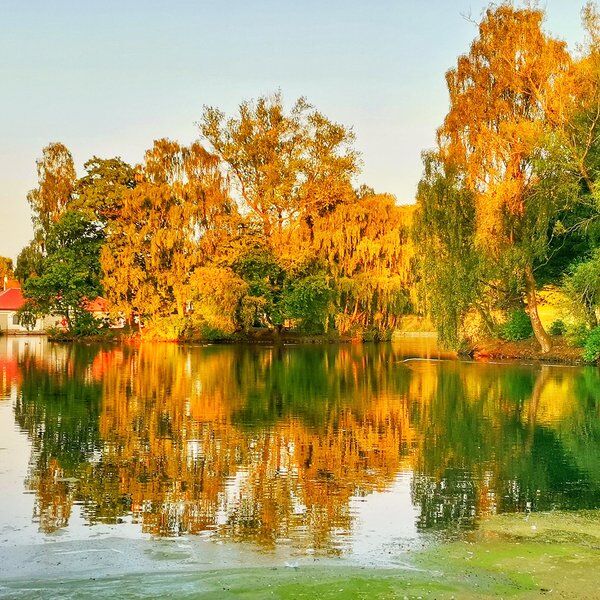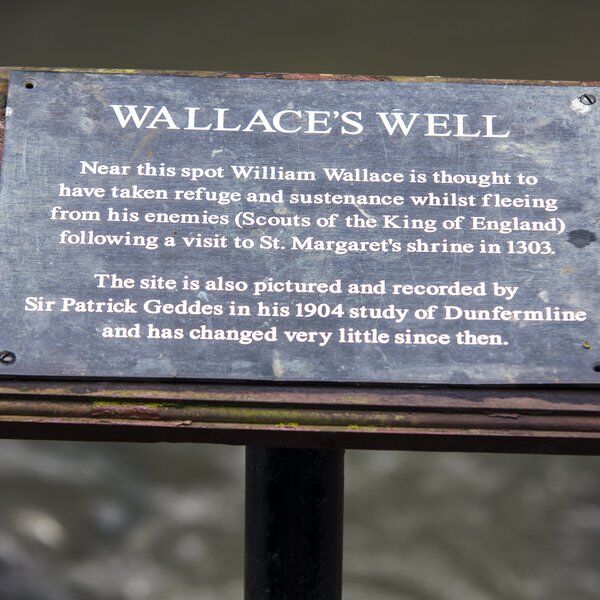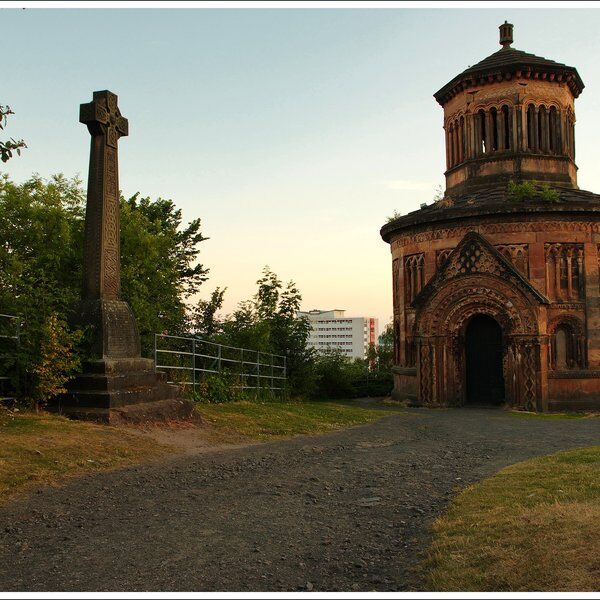Discover the Govan Stones in Glasgow
The Govan Stones have been recognised by the British Museum as one of the most substantial collections of Viking carved stones in the United Kingdom.
“The only other large urban collection of these stones is at the National Museum of Scotland in Edinburgh, but this is a representative rather than region-specific collection, drawn from across Scotland.”
They were unearthed in Glasgow’s industrial Govan district at Govan Old Parish Church, transforming the church into a museum for visitors to view the collection. The best part about the discovery is that more and more stones are being excavated from beneath the turf of the church, some as recently as 2023.
The origin of these stones, dating back over a millennium, is significant as it forces historians to ask questions about Govan’s role during the Viking era. It also identifies Govan Old Parish as the primary church for the Kingdom of Strathclyde. The church’s connections to this forgotten kingdom of the northern Britons, suggests it was an early seat of Christianity in Scotland.
Today, visitors can view the Govan Stones at the museum, open daily from April to October. There is also a range of other artefacts including crosses, cross shafts, hogback stones, and the exceptional Govan Sarcophagus, all carved from solid stone in pre-Norman, northern Britain.
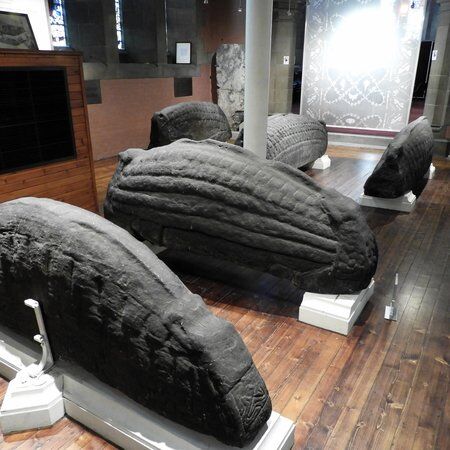
Early Mediaeval Govan
Archaeological discoveries have traced the origins of Govan Old Parish Church, as a christian burial site, back to the 5th or 6th century. Excavations revealed foundations that would have supported an early wooden structure before its Scottish Gothic Revival style redesign in the Victorian period, by architect Sir Robert Rowand Anderson.
The teardrop-shaped churchyard, a rare feature also nods to its ancient origins, aligning with early mediaeval church designs that often featured circular or oval boundaries. And other details, such as its large graveyard and abundance of early mediaeval sculptures, suggest it received royal funding.
A Viking Presence in Govan
According to carvings of Viking raids on the Govan Stones, which date from the 9th – 11th centuries, Govan's prominence rose around this time, especially in relation to Dumbarton Rock. During this period the fortress Alt Clut, in Dumbarton, was the focal point of the ancient Kingdom of Britons. However, after the Viking raids of Dumbarton in 870 AD, the kingdom – now Strathclyde – moved to Govan, marking a political shift in power as Govan became the new heart of the kingdom.
Included in the Govan Stones Collection are five hogback stones. Hogback stones, designed to resemble Scandinavian longhouses, reinforce the notion of a partial settlement by the Vikings in Govan.
“These are the largest group of Hogbacks in Scotland – and by far the largest anywhere in Britain.”
Professor Stephen Driscoll from the University of Glasgow emphasises the strong connections between the British Kingdom of Strathclyde and the Scandinavian world, suggesting that the hogback stones acted as the grand halls of Viking lord's or chieftain's.
The focal point of Govan Old Parish Church, the sarcophagus found in 1855, is believed to commemorate St Constantine, who valiantly defended against Viking invasions in the 9th century.
“I think this sarcophagus is to house Constantine's relics as part of making this church into an important place… I'm sure [the vikings] would have seen Roman sarcophagi when they went on pilgrimage and things like that. So they would have had the sense that emperors belong in a sarcophagus.”
Carved from solid sandstone, the sarcophagus is a unique Pre-Norman and Northern British artefact, featuring intricate stag hunting scenes and stylized animals.
Discovering the Govan Stones during the Victorian Age
It wasn’t until the late 19th century, when the Govan Stones were discovered. They were excavated, plaster casts were made, and documentation took place, courtesy of photographer Thomas Annan, known for capturing Glasgow's slum conditions.
Approximately two-thirds of these stones found a home within Govan's Victorian parish church. The collection comprises a carved sarcophagus featuring stylized animals, five 'hogbacks,' two upright cross-shafts, two cross-slabs, and 21 recumbent slabs adorned with intricate interlace patterns and cross motifs. Due to space constraints, the remaining 14 stones were displayed along the churchyard's eastern boundary wall.
In 1926, recognizing their significance, the stones were moved inside Govan Old Parish Church to protect them, ending over 1,000 years of undisturbed rest in the graveyard.
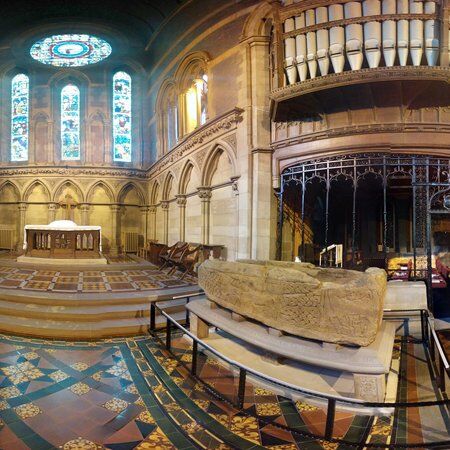
Industrialised Govan
As we know, the churchyard contains burials dating back to the earliest phases of Christianity in Scotland. However, of the 236 visible gravestones today, most date from the 16th to the 19th centuries, reflecting Govan's population growth and industrial rise during the shipbuilding era.
Sadly, in 1973, the nearby Harland and Wolff shipyard faced demolition, casting uncertainty on the fate of the 14 outdoor stones. For almost half a century, they were considered 'lost,' hidden by overgrowth and mistaken for debris from the nearby demolition.
Thankfully, a 'lost' stone from this group was rediscovered in 2019 by a fourteen-year-old student, Mark McGettigan, participating in the ‘Stones 'n' Bones’ community archaeology and heritage program. Subsequent excavations revealed two more recumbent gravestones, raising hopes that potentially all 14 ‘lost’ stones may have survived.
The Govan Stones in Recent Years
In the post-industrial period of the 1990s, Govan experienced a decline, leading to economic depression and rising unemployment. To counter these challenges and inject a sense of pride into the community, minister Tom Davison Kelly, of Govan Old Parish Church, set up the Friends of Govan Old.
The minister sought to make the Govan Stones more accessible to the public and tasked Professor Stephen Driscoll with excavating the churchyard, in case there were more treasures beneath the ground.
“The church could be a centre for studying Scotland’s early mediaeval carved stones, which were such a key cultural contribution to early mediaeval Europe.”
Professor Driscoll, of the University of Glasgow, and his team uncovered the burials dating back to the 5th/6th century, and the teardrop-shaped churchyard, still marked by a wall, retained traces of its original boundary ditch.
Ongoing archaeological digs, using iron probes to identify the stones and their margins, have turned up new findings in recent years, like the ‘Govan Warrior’ discovered in 2023.
Creating the Govan Heritage Trust
The 1990s saw the church as an active parish institution, but in 2007, ecclesiastical reorganisation led to its decommissioning. Local efforts began to preserve the old church and the Govan Stones, which led to the establishment of the Govan Heritage Trust and the designation of Govan Old Parish Church as a Scheduled Monument by Historic Environment Scotland in 1993.
The Govan Heritage Trust is a community-based charity, now in possession of both the church and its treasures that has worked hard to enhance the visitor experience at the Old Parish.
Prior to the COVID-19 pandemic, progress was significant, with finalised building designs, granted planning permission, and £1.8 million in funds secured for the transformation. This was reflected with the 15,000 visits during summer openings. Since the pandemic progress has been slow but steady.
Discover More about Glasgow with CityDays
Ready to discover more of what Glasgow has to offer?
CityDays have a brand new treasure and scavenger hunt in Glasgow which combines the fun of an escape room with the historic facts and whimsical trivia of a walking tour!
Take the stress out of planning your visit to Glasgow and book your adventure today!
Not visiting Glasgow this time? Don’t worry, you’ll find us all over the world.
